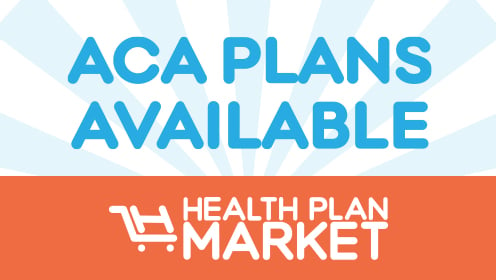People eligible for Medicare have different ways to get health insurance coverage. Medicare Advantage and Original Medicare cover the cost of preventative care, hospital visits and more.
An additional option for those with Original Medicare is Medigap insurance. Medigap helps you pay for Medicare-related costs that would normally be paid out-of-pocket, such as copays. While Medigap can be beneficial, not everyone is eligible to get it and these plans have some limitations.
Here’s what you need to know about Medigap insurance, including what it covers, how much it costs, who can get it and where you can buy Medigap plans.
KEY TAKEAWAYS
- Medigap, also known as Medicare Supplement Insurance, offers supplemental coverage to Original Medicare beneficiaries.
- Medigap isn’t health insurance. Instead, it helps you pay out-of-pocket health care costs.
- Costs for Medigap varies by plan, coverage, insurance carrier, deductible and your location.
- Medigap is different from Medicare Advantage, which are health plans sold by private health insurance companies.
- A Medigap policy can be a wise choice for people with many out-of-pocket Original Medicare costs.
What is Medigap insurance?
Medigap helps you pay for Medicare, but it’s not actually health insurance.
“Medigap, otherwise known as Medicare Supplement Insurance, provides supplemental coverage to Original Medicare benefits,” says Christian Worstell, a licensed insurance agent and senior staff writer for MedicareAdvantage.com.
“Medigap policies can cover deductibles, copayments, coinsurance and other out-of-pocket costs that are required by Original Medicare (Medicare Part A and Medicare Part B),” adds Worstell.
With Original Medicare, Part A pays for inpatient hospital, skilled nursing facility, home health and hospice care. Part B pays for doctors’ visits, outpatient hospital care, durable medical equipment and other medical services.
Depending on the Medigap insurance plan you choose, it could pay for costs that Original Medicare doesn’t cover, such as prescription drugs. However, you may need to buy a separate policy or Part D prescription drug coverage. Original Medicare members need the Medicare prescription drug plan to have insurance for prescription drugs.
One important thing to know about Medigap insurance is that it can’t be used with Medicare Advantage. It will only cover out-of-pocket costs for Original Medicare.
Also, unlike other insurance plans that cover families, Medigap plans only cover individuals. That means you and your spouse must each get your own policies.
How much does a Medigap policy cost?
The answer to the Medigap cost question is complicated.
Medigap policy costs vary based on the amount of coverage purchased, the insurance carrier, deductible and location.
In addition, some health insurance companies base a Medigap monthly premium on age. Other plans include a rate that increases as you get older.
Similar to any type of insurance-related plan, it’s best to shop around. Figure out what plans are best for you and then get health insurance quotes from multiple insurers offering Medicare supplement plans. You get what you pay for, so expect to pay more for Medigap plans with higher amounts of coverage.
The cost of your Medigap policy also depends on whether or not the insurance company offers discounts. Some carriers offer discounts for women, non-smokers or married couples. Some also offer discounts for paying yearly, paying premiums via electronic funds transfer or for having multiple policies.
Best Medicare supplement insurance companies of 2022
Many companies sell Medicare supplement insurance plans. To choose the right plan for you, it’s important to compare providers using your personal criteria. The best plan provider for you may not be the best option for someone else.
To help you get started, we highlighted five of the top Medigap insurance companies. We also received sample quotes from each company for a 65-year-old female living in Rhode Island who is a non-smoker:
Cigna
Cigna offers five Medigap insurance plans (Plan A, high-deductible G and N) that cover you anywhere in the United States and in some emergency situations abroad.
You can visit any provider that accepts Medicare, and in most cases, referrals aren’t needed. Cigna customers also get access to a 24/7 nursing hotline and a healthy living rewards program.
Mutual of Omaha
Mutual of Omaha has four Medigap plans (high-deductible G and N), which cover basic benefits, skilled nursing facility coinsurance, Part A and Part B deductibles, Part B excess charge and foreign emergency care. Plus, every Medigap policy from Mutual of Omaha includes a free benefit rider that gives you access to discounts and services through third-party providers.
Aetna
Aetna sells nine different Medigap insurance plans (Plan A, B, C, D, G, high-deductible G and N), but the specific plans available vary by state. One of the biggest benefits of Aetna Medigap insurance is that your plan is transferable if you move to a new state. There are no network restrictions, and you can get coverage while traveling overseas.
AARP
AARP sells Medigap insurance through UnitedHealthcare, which is the largest health insurance company. It offers several Medigap plans (Plan A, B, C, G, high-deductible G, K, L and N) that vary depending on location, with guaranteed coverage for life even if your health declines. The only downside is that you must be an AARP member to get Medigap insurance through the company.
Humana
Humana sells seven Medigap plans (Plan A, B, C, G, K, L and N). Certain plans cover Part A and Part B coinsurance, three pints of blood, skilled nursing and hospice coinsurance and copays, Part A and Part B deductibles, Part B excess charges and foreign travel emergencies.
Although most Medigap plans are sold through private insurance companies, some states offer Medicare SELECT, which is typically less expensive. The catch is that you must use specific hospitals and the benefits might not be as good.
Medicare supplemental insurance plan enrollment and eligibility
Not everyone is eligible to get a Medicare supplemental insurance plan.
“Those who are enrolled in both Medicare Part A and Part B are eligible for Medigap. Only in certain states may you enroll in Medigap if you are under the age of 65,” says Worstell.
Even if you’re eligible for Medicare due to an illness or disability, you still might not be able to purchase Medigap insurance until age 65.
If you qualify, you can buy a supplemental plan during the Medicare open enrollment period or during the six-month period after you turn 65. During that period, you’re allowed to purchase any Medigap plan offered in your state, regardless of your health.
To make changes to your policy, you’ll need to wait until the Medicare annual enrollment period to do so, barring a few specific situations. Medicare annual enrollment runs from October 15 to December 7 every year.
When to buy Medigap supplemental insurance
If you’re thinking about buying Medigap insurance, it’s important to act quickly when you become eligible for Medicare.
The best time to buy Medigap insurance is during the initial enrollment period, which starts the month you’re enrolled in both Medicare Part A and Part B, and are 65 years old. If you wait longer than the six months after you turn 65, it can be much harder to get coverage.
“You may still enroll in Medigap after this six-month period has ended, but insurance companies then reserve the right to use medical underwriting to determine your rates,” adds Worstell.
Depending on your age and pre-existing conditions, you could get denied Medigap coverage based on your health.
How to compare Medigap policies
Depending on where you live, you may have a choice of 10 standardized Medigap policies that the federal government has authorized. They are identified by letters: A, B, C, D, F, (no longer available to new enrollees) G, K, L, M and N. Plan F and G are sometimes offered as a high-deductible plan.
“The point about standardization is that each policy that has the same letter has the same set of benefits regardless of which insurance company sells it,” says Patricia Barry, AARP’s ‘Ms. Medicare’ columnist and author of ‘Medicare for Dummies, 2nd Edition.’
However, while the benefits under each letter are standard, the costs aren’t.
“Insurance companies charge a wide variety of premiums,” says Barry.
To find the plan that’s best for your age, health and financial situation, she recommends reviewing your choices every year during open enrollment.
The Plan Finder on Medicare’s website is a great resource, Barry says. For example, you can enter the medications you take and their dose to see if they are part of the plan you’re considering. The results will be organized by plan type and are initially sorted by lowest estimated cost to highest.
You also can use the chart below from Medicare.gov to view differences among the plans. For instance, Plans A and B don’t offer emergency coverage if you travel abroad.
Here’s a short explanation of terms to help you understand the table:
- Yes means it covers 100% for this benefit
- No means it offers no coverage for this benefit
- Percentage (%) is the percent that the plan covers for each benefit
- N/A is not applicable
| Medigap Benefits | Medigap Plans | |||||||||
|---|---|---|---|---|---|---|---|---|---|---|
| A | B | C | D | F1 | G | K | L | M | N | |
| Part A coinsurance and hospital costs up to an additional 365 days after Medicare benefits are used up | Yes | Yes | Yes | Yes | Yes | Yes | Yes | Yes | Yes | Yes |
| Part B coinsurance or copayment | Yes | Yes | Yes | Yes | Yes | Yes | 50% | 75% | Yes | Yes |
| Blood (first 3 pints) | Yes | Yes | Yes | Yes | Yes | Yes | 50% | 75% | Yes | Yes |
| Part A hospice care coinsurance or copayment | Yes | Yes | Yes | Yes | Yes | Yes | 50% | 75% | Yes | Yes |
| Skilled nursing facility co insurance | No | No | Yes | Yes | Yes | Yes | 50% | 75% | Yes | Yes |
| Part A deductible | No | Yes | Yes | Yes | Yes | Yes | 50% | 75% | 50% | Yes |
| Part B deductible | No | No | Yes | No | Yes | No | No | No | No | No |
| Part B excess charges | No | No | No | No | Yes | Yes | No | No | No | No |
| Foreign travel exchange (up to plan limits) | No | No | 80% | 80% | 80% | 80% | No | No | 80% | 80% |
| Out-of-pocket limits | N/A | N/A | N/A | N/A | N/A | N/A | $5,240 | $2,620 | N/A | N/A |
1. Note that plan F is no longer available to new enrollees as of January 1, 2021.
2. Plan N pays 100% of the Part B coinsurance, except for a copayment of up to $20 for some office visits and up to a $50 copayment for emergency room visits that don’t result in your being admitted to the hospital.)
3. After you meet your out-of-pocket yearly limit and your yearly Part B deductible, the Medigap plan pays 100% of covered services for the rest of the calendar year.
Medigap vs. Medicare Advantage
Medigap and Medicare Advantage are two separate types of plans.
Medigap is a supplement to Original Medicare. Its only purpose is to help pay for out-of-pocket costs associated with Original Medicare, like deductibles and copays. The single benefit of Medigap is to lower the costs of Original Medicare.
Medicare Advantage, on the other hand, is an alternative to Original Medicare and is a true health insurance plan. A Medicare Advantage plan combines coverage usually found in Medicare Parts A, B and D, and usually covers the cost of preventative care, surgeries, screenings, prescription drugs and more. Medicare Advantage plans may also offer additional benefits not found in Original Medicare plans, including vision and dental coverage.
In Worstell’s words, “One way to think of the difference between the two plans is that Medicare Advantage provides coverage for services and items while Medigap provides coverage for costs.”










